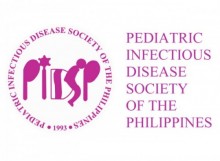Mean Hematocrit Values, Disease Severity, and Discharge Status of Undernourished Versus Well-Nourished Children with Dengue Infection in a Tertiary Government Hospital
Kiara Natalie B. Roble, M.D. and Robert A. Tagocon, M.D.
ABSTRACT
Background: Studies comparing hematocrit values, disease severity, and discharge status between well-nourished and undernourished pediatric dengue patients are limited.
Objective: This study compared the mean hematocrit values, disease severity and discharge status of undernourished vs. well-nourished pediatric dengue patients admitted in a tertiary government hospital.
Methodology: A retrospective cohort study involving 114 pediatric dengue patients, with comparison groups of well-nourished and undernourished children matched according to age, phase of illness and sex was done. Main outcomes measured were mean hematocrit values, disease severity and discharge status.
Results: There was a significantly lower mean pre-resuscitation hematocrit in the wasted (M=39.67%, SD=3.78) compared to the well-nourished group (M=43.68%, SD=4.72), p=0.006, among children >6 to 12 years old in the febrile phase. There were no significant differences in disease severity and discharge status between wasted and well-nourished children. In those >2 to 6 years old in the febrile phase, the severely wasted had significantly higher pre-resuscitation hematocrit (M=43.28%, SD=4.77) compared to well-nourished children (M=39.11%, SD=5.34), p=0.041. More severe dengue, worse discharge status and an earlier time to demise was seen among severely wasted children.
Conclusion: Wasted participants had significantly lower mean hematocrit values with no difference in diseaseseverity and discharge status when compared to well-nourished participants. Severely wasted children had significantly higher hematocrit values, severe dengue, and worse discharge status.
Keywords: Dengue Fever, Undernutrition, Hematocrit
https://doi.org/10.56964/pidspj20222302009
| View Full Article in PDF format |
Journal 2022 Vol.23 No.2 Original Articles 4pidsp@uplink.com.ph2022-12-04T10:33:05+00:00
